Mark Sisson's Blog, page 375
August 5, 2012
Weekend Link Love
 Research of the Week
Research of the WeekA race day high-fat meal resulted in better endurance performance than a race day high-carb meal following three days of carbohydrate loading.
Choline intake during pregnancy predicts the child’s epigenetic response to stress once born. Kids from moms who ate just 480 mg of choline a day during pregnancy (the recommended amount) secreted more cortisol in response to stress than kids from moms who ate 930 mg per day. All the more reason to eat your yolks!
Speaking of stress, it seems to shut off the parts of the brain that control goal-oriented behavior. So that kid with the excessive cortisol gene expression might be less likely to accomplish interesting, exciting things.
Caffeine appears to be helpful against Parkinson’s disease.
Interesting Blog Posts
Not technically a written blog, but Robb Wolf was recently on the Joe Rogan Experience podcast. It’s a good listen (but not really safe for work).
Stephan Guyenet reviews a review paper in which he was one of the reviewers reviewing the health effects of high-fat dairy.
Everything Else
Witness the calm, cool, and collected visages of the world’s greatest athletes engaging in their life’s passion.
Why don’t we eat pig’s milk cheese, goat butter, and sheep milk?
Who’s up for some dragon eggs?
Recipe Corner
Grab some sichuan peppercorns, a big slab of pig, and make yourself a sichuan pepper-rubbed pork roast.
Watermelon and tomato gazpacho. It might sound weird, but just try it.
Time Capsule
One year ago (Aug 5 – August 11)
How Many Calories Does Muscle Really Burn? (And Why It’s Not Really About Calories, Anyway) – How does the broscience measure up to reality?
Human Interference Factor – What happens to food when humans get involved?
Comment of the Week
I only had time to skim this article.
- Nice one, Finnegan’s Wake.
Grab The Primal Blueprint Cookbook Today and Receive Free S&H and a Free Primal Blueprint Poster

August 4, 2012
Balsamic-Glazed Drumsticks
 Chicken drumsticks are the perfect finger food for so many occasions. Serve drumsticks at parties, pack them for lunch, hand them to your kids for a late-afternoon snack or grab a drumstick on your way out the door in the morning. Delicious baked or grilled with only salt and pepper, drumsticks also quickly soak up the flavor in sauces and marinades.
Chicken drumsticks are the perfect finger food for so many occasions. Serve drumsticks at parties, pack them for lunch, hand them to your kids for a late-afternoon snack or grab a drumstick on your way out the door in the morning. Delicious baked or grilled with only salt and pepper, drumsticks also quickly soak up the flavor in sauces and marinades.
This balsamic glaze (which can do double-duty as a marinade) lightly coats the drumsticks rather than drowning them in thick sauce. As the glaze reduces, first on the stove and then in the oven, the flavor intensifies and becomes surprisingly bold.
Balsamic-glazed drumsticks are tangy, slightly sweet and perfectly salty. The flavor is complex and interesting enough that you could serve these at a dinner party, but your kids are going to love them too.
Eat these drumsticks warm from the oven or eat them cold, right out of the refrigerator. Either way, they’re finger lickin’ good.
Ingredients:
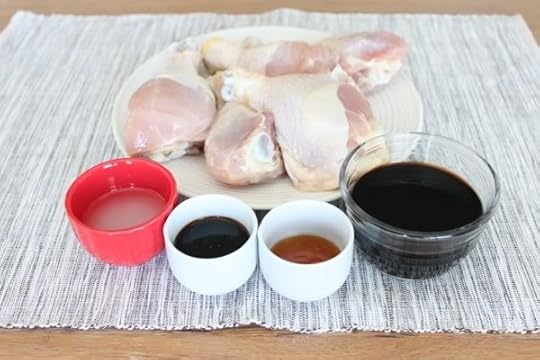
6-8 chicken drumsticks
3 tablespoons coconut oil (45 mL)
1/2 cup balsamic vinegar (120mL)
3 tablespoons tamari (45 mL or 1 1/2 fluid ounce)
1/2 to 1 tablespoon honey (15mL)
Instructions:
Preheat the oven to 450 degrees Fahrenheit (232 degrees Celsius)
Coat the drumsticks with coconut oil.
Place the drumsticks on a foil-lined, rimmed baking sheet. Bake for 35 minutes or until lightly browned and fairly crisp.
Combine the balsamic vinegar, tamari and honey in a saucepan and bring to boil. Let the mixture boil for 5 minutes or until it has reduced to about 1/3 of a cup.
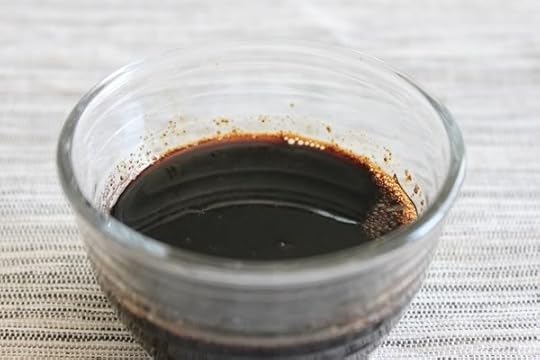
Take the drumsticks out of the oven and pour the glaze on top. Bake for another 5 minutes then take the pan out of the oven and use tongs to roll the drumsticks around in the glaze (it will have thickened a bit more in the oven) and/or use a brush to coat them with the glaze.
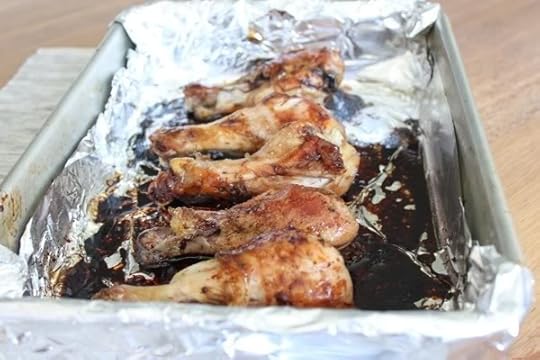
Garnish with chopped parsley or cilantro if you like.
Let the drumsticks rest a bit to cool before eating, then dig in.

Grab The Primal Blueprint Cookbook Today and Receive Free S&H and a Free Primal Blueprint Poster

August 3, 2012
Primal Evolution: Change Within Weeks, Transformation in Mere Months
It’s Friday, everyone! And that means another Primal Blueprint Real Life Story from a Mark’s Daily Apple reader. If you have your own success story and would like to share it with me and the Mark’s Daily Apple community please contact me here. I’ll continue to publish these each Friday as long as they keep coming in. Thank you for reading!
 Hi Mark,
Hi Mark,
Greetings from Tulsa, Oklahoma!
I’ve been debating sharing my success story, as I’m not really one to “toot my own horn.” However, I’ve thought about how others might benefit from hearing it – so here goes!
I was a very active kid and teenager growing up and liked to play a variety of sports (baseball being my favorite). Throughout middle and high school I tried my hand competitively at baseball, soccer, basketball, golf, and some recreational distance running. I always enjoyed being known for my speed, although not so much for my athletic abilities  . Much of the reason I was fast was because I was very slender (about 135 lbs at 6’ tall). My freshman year of college I continued to stay active by playing intramural softball, and even some skateboarding. As my college years went on my activity level declined some, but I was still able to manage the same body image and general level of health, for the most part. Additionally, being a college kid, I never worried about what I ate or drank.
. Much of the reason I was fast was because I was very slender (about 135 lbs at 6’ tall). My freshman year of college I continued to stay active by playing intramural softball, and even some skateboarding. As my college years went on my activity level declined some, but I was still able to manage the same body image and general level of health, for the most part. Additionally, being a college kid, I never worried about what I ate or drank.
I took a full-time job (with the Tulsa Drillers, the AA affiliate of the Colorado Rockies) in Tulsa after college and moved from upstate NY to begin my career at age 22. For the first few years here I drank often (mostly beer after games), but for six months to a year drank a few too many Jack and Cokes. Boy did my body change! During this time I also struggled with terrible/debilitating back spasms. Finally two years ago (at age 25) I had enough of the back problems and began to do some cardio and some strength exercises to try and help combat the problem.

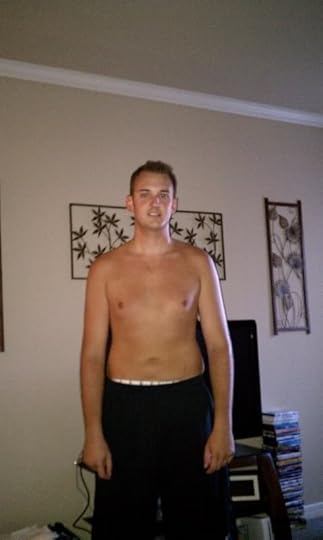
Last year, about a month before Thanksgiving, I discovered your blog by happenstance, and ordered your book The Primal Blueprint 21-Day Total Body Transformation. My views on health, diet, and working out all changed from that point forward. I went from weighing 180 lbs to my present day 150 in a matter of a few months. (I was heaviest at 195-200 lbs in 2010 (above).) I truly enjoy clean eating, and working out now.
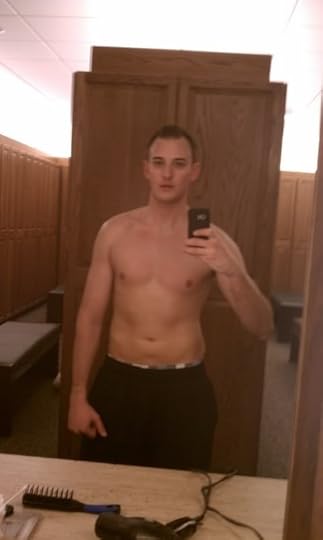
This is how it happened: Since I had already incorporated some exercise into my routine, the next step was to begin eating correctly. It was amazing to learn (initially through your book, then through my own additional research) how the food we eat reacts in our bodies. I cut out SAD foods, bread, pastas, most processed foods, etc., and noticed a change in my body within a few weeks.
Once I felt I had a grasp on eating correctly I began Primal Essential Movements regularly. From there I realized I really enjoyed challenging myself with weightlifting. There’s no better feeling than being able to increase strength through hard work. I’ve continued to lift weights 5-7 days a week, and have continued to make strength gains. I recently completed a 50-day pullup challenge! 1,785 pullups in 50 days. First day begin with 10, second day do 11, and so on until you get to 60.
My diet is pretty boring now, really; my staples are eggs, bacon, steak, chicken, broccoli, asparagus, fish, and bananas. I don’t try cooking much, so these things are easy for me. Although, I have tried a few of the Primal Blueprint user submitted recipes. I particularly enjoyed Almond Banana Pancakes and Omelet Muffins. I use quite a bit of the following: organic whole butter, organic extra virgin olive oil, organic unrefined coconut oil, and almond butter sparingly. Occasionally I will drink organic whole milk with my Primal Fuel after a workout. The biggest challenge for me is eating enough vegetables, so I’ve begun to try and incorporate more of those in my diet (e.g. blending kale into my protein shakes). I supplement each meal with a protein shake (three per day). Occasionally I will add raw eggs to the shakes, and regularly add a bit of olive oil in each one.
I like to experiment from time to time with eating, and have found that I really like the LeanGains approach to meal timing. (Eat from 1 PM-9 PM, fast from 9 PM-1 PM). One of the reasons I like the approach is because I enjoy working out in the morning while in a fasted state (tons of energy typically!).
The biggest challenge I faced when making the switch to Primal was pizza. I really, really like pizza, so not eating pizza is tough! Mainly the hardest part for me is continuing to eat correctly. I don’t really know anyone else in my life who eats like I do. At work there are always cakes, cookies, etc., around. When eating at restaurants people sometimes find it hard to believe that I don’t want the loaf of bread or the baked potato with my meal. It’s not that I don’t enjoy these foods (hell, I like everything), I just choose not to eat them, and do what’s right for me. It sounds very selfish, but I’m not really concerned with what other people think I should be doing. A lot of people say that I don’t have any “fun” anymore because I choose to not go out drinking each weekend. My idea of fun is bettering myself, and continuing to learn what it takes to get stronger and healthier. I want to live a long life!

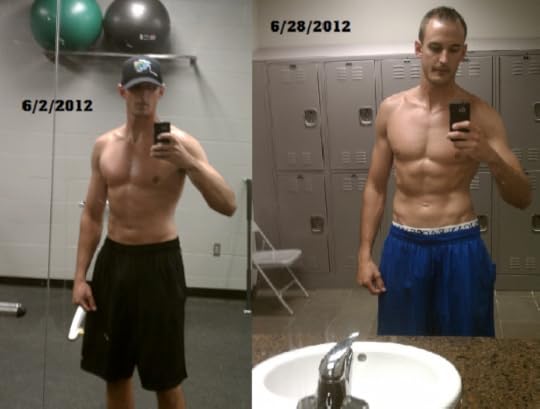
Mark, I’ve shared your book with family members, and co-workers. Reading it was the spark I needed to fuel the now fat-burning machine that is my body. Thank you!
Mike
Grab The Primal Blueprint Cookbook Today and Receive Free S&H and a Free Primal Blueprint Poster

August 2, 2012
The Pleasures of Slow Living
 We all live it or live with it to some extent – our society’s obsession with speed. Whether it’s with omnipresent traffic, constant deadlines, or crammed schedules, too many of us spend too much time running or overrun. The pace itself can over time become a lens for life, our focus in constant erratic motion. In the cursory sweeps of our day, we miss out on the nuanced textures of life – the sensory pleasures of a good meal, the subtle changes in our growing child’s face, the quiet beauty of a weekend morning, the warm connection with a partner or friend. What do we do when we find ourselves caught in an unsustainable momentum? The answer for some is an internationally growing – and diversely focused – movement known as slow living.
We all live it or live with it to some extent – our society’s obsession with speed. Whether it’s with omnipresent traffic, constant deadlines, or crammed schedules, too many of us spend too much time running or overrun. The pace itself can over time become a lens for life, our focus in constant erratic motion. In the cursory sweeps of our day, we miss out on the nuanced textures of life – the sensory pleasures of a good meal, the subtle changes in our growing child’s face, the quiet beauty of a weekend morning, the warm connection with a partner or friend. What do we do when we find ourselves caught in an unsustainable momentum? The answer for some is an internationally growing – and diversely focused – movement known as slow living.
Today experts tell us that runaway stress has us teetering on the verge of a public health crisis with three-quarters of Americans reporting they “experience stress at levels that exceed what they define as healthy.” Undoubtedly, our obsession with speed contributes to this trend. We’re taking on more than we can reasonably process. We’re doing more and experiencing less.
One of the central voices of the slow living movement, Carl Honoré, argues our society is caught in an ever escalating “arms race” of speed, and we’re all paying the consequences. In one of the movement’s seminal books, In Praise of Slowness, Honoré illuminates a sad reality shaped by everything from fast food to “one-minute bedtime stories” as well as research on parents who spend twice as much time on email as they do on playtime with their children, workers who face burnout in their twenties and thirties, and doctors whose minimal time with patients causes them to miss pertinent if not critical information. Our addiction to speed, Honoré warns, is undermining our personal relationships, our societal civility, our individual fulfillment, and physical health.
Speed in this sense is more than a velocity, as slow living proponents explain. It morphs sooner or later into a personal and collective mindset. It becomes the rationalization behind all manner of deleterious choices. From a society standpoint, for example, it can be relying on “fast” farming methods (e.g. CAFOs, GMOs) that produce short term profits with long term consequences. On a personal level, it can encompass all of the games we play with ourselves to stay above water like eating quick instead of nourishing food, neglecting fitness and play, using stimulants to get through another afternoon, giving up sleep, and multitasking our way through each day. In our attempts to meet the most immediate obligations, we miss filling our most essential needs.
Beyond the logistical strategies and short-term fixes, there’s a better way, say slow living advocates. Slow living, according to its proponents, is predominantly about the attention and intentionality we bring to the spheres of life. It’s about living one’s values and giving out time and attention accordingly. Slow living as it exists today grew out of the slow food movement, which began in Italy during the 1980s with a call to focus on the sources and experience of food. The broader scope of the movement today reflects the getting back to basics ideal behind slow food. Then it was about supporting regional food, traditional cooking, and and the personal and social pleasures of eating. Today in the various and sundry offshoots of slow living (e.g. slow parenting, slow design, slow travel, slow money, slow education, and slow health), it can mean everything from seeking out complementary and alternative therapies to working (and living on) less, from observing “secular sabbaths” from technology to savoring the pleasures of slow sex.
Experience tells us that slow activities and a slower pace make for a more relaxing experience. People everywhere take up “slow hobbies” like knitting or wood carving (even if they never thought of them in this light). We enjoy the quieting influence of an ambling stroll at night. We relish the slow and sensory feast of a big holiday dinner.
Yet, there’s science to support the call to decelerate. Long, slow low-level aerobic workouts, for example, are correlated with everything from improved memory and increase longevity to reduced risk of metabolic syndrome, breast cancer and cardiovascular disease. The Body by Science strength training protocol, in which loads are lifted at an extremely slow rate, can result in greater muscle gain for some people and can help diversify a strength training regimen. “Slow agriculture” that raises livestock with biologically appropriate feeds (e.g. grass grazing) and grows crops without the use of the synthetic pesticides make for a more nourishing (and less toxic) food supply. Activities that induce the quiet state of mental flow can ease symptoms of anxiety and challenge us in positive, healthy ways.
To advocates, the crux of slow living refuses quantification. Living slowly ultimately means living deeply. Slow travel, for example, is both a lesson in its own right and a metaphor for the movement. There’s something missed in hitting the postcard sites of a city we travel to and then moving on to the next destination. We have the photo memento for our collection, but we leave relatively unchanged. Committing to a single destination for as much time as our vacation allows gives us the chance to delve into the culture of a place – to experience the subtler but more telling characteristics of a locale. We meet the people, hear the stories, feel the communal rhythm. With time and attention, we encounter a place and let its influence permeate us. We return home different, richer for the journey. Slow movement advocates talk about the importance of incubation, that rich period in which the influence of an experience synthesizes with self. Time and mental space is critical for this absorption. Slow living – in all its spheres – seeks above all to cultivates a reflection and nurturance our immediate gratification culture often eschews. Proponents say it calls us to commit our time and passion to what feels most natural and life-giving.
How do I see the connection between slow living and Primal living? I think slow living on some level reclaims what is natural in human relations, basic sustenance, and life balance. Though I might suggest a more worthy slow food ritual than bread baking, I’m won over to the overall concept. Contrary as I am, I appreciate an effort to challenge conventional thinking.
More than that, however, I like how slow living in many respects brings us closer to some of our evolutionary patterns. Sure, Grok wasn’t pondering the virtues of a “slow” stock portfolio or holding workshops on tantric sex (although who knows). Nonetheless, the core of the movement rings true – and timeless. There’s a reason we miss quiet weekends untethered to technology. There’s a reason a city with ample park space and a vibrant pedestrian zone feels more inviting than a congested sea of skyscrapers and cars. There’s a reason we feel uniquely fulfilled cooking and sharing a homemade meal with others. These were the basic experiences of our ancestors. Humanity evolved with rhythms and rituals modern acceleration has left in the dust. Our psyches haven’t caught up with the change of pace. Life makes more sense the slow way.
As slow living advocates explain, it’s not about moving through life at a snail’s pace. Slow living calls us to bring intention to our mental tempo. We exert the energy and speed we want to conjure for a particular task, but we don’t get caught up in an addiction to pace. It’s about deciphering a “sweet spot” for living, a personally optimal rhythm for life that serves us best. We can be challenged without being overwhelmed. We can feel recharged without being stagnant. A good Primal life seeks that same sweet spot – an individually determined set point for thriving. Slow living can be one more framework to help you cultivate that goal.
Thanks for reading today. Let me know your thoughts on slow living. Have a great end to the week, everyone!
Grab a copy of Primal Blueprint Quick & Easy Meals for over 100 Primal Recipes You Can Prepare in 30 Minutes or Less

August 1, 2012
When Listening to Your Body Doesn’t Work
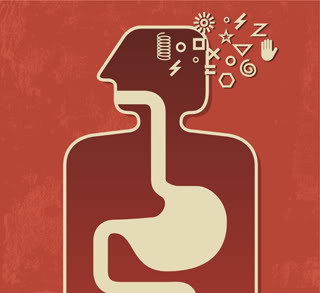 Hunger largely comes down to perceived energy and/or nutrient insufficiency. Your body thinks that it needs more calories and more energy, and hunger sets in to get you to eat the food that contains those nutrients. Now, if perception matches up well with reality – if you truly do need more nutrients – things are good. You need some food, you eat some food, and you stop when you’ve had enough. In this situation, listening to your body is a good idea. That’s what all those Primal people (including me) are talking about when they tell you to “just listen to your body, maaaaaaan,” because for those people, it truly is that simple. Eliminating the excess carbs, the refined sugar, the grains, and the processed seed oils while adhering to the other Primal laws regarding exercise, sleep, stress, sun, and all the rest was enough to right the ship.
Hunger largely comes down to perceived energy and/or nutrient insufficiency. Your body thinks that it needs more calories and more energy, and hunger sets in to get you to eat the food that contains those nutrients. Now, if perception matches up well with reality – if you truly do need more nutrients – things are good. You need some food, you eat some food, and you stop when you’ve had enough. In this situation, listening to your body is a good idea. That’s what all those Primal people (including me) are talking about when they tell you to “just listen to your body, maaaaaaan,” because for those people, it truly is that simple. Eliminating the excess carbs, the refined sugar, the grains, and the processed seed oils while adhering to the other Primal laws regarding exercise, sleep, stress, sun, and all the rest was enough to right the ship.
But that’s not everyone. Sometimes perception does not match up with reality. Sometimes your body thinks it needs more nutrients when it really doesn’t, for a variety of reasons. This isn’t actually an example of your body lying to you, since your body “believes” what it’s saying, but the end result is the same: you eat something that you really don’t need. It’s a bit like how your friends and family who worry about you eating all that fat and protein try to push bran muffins and whole wheat pasta on you. They’re operating under a fundamentally broken set of assumptions, but they mean well.
So, why does this happen? What’s going on when someone’s sense of hunger is broken? When doesn’t listening to your body work?
When you can’t access your stored body fat.
Body fat is stored energy; it’s long-term, slow-burning fuel that our bodies love to use, and should be able to use very well. But what happens when you can’t burn it very well?
You burn sugar instead. After all, you need energy from somewhere, and research shows that those who have the most problem with hunger – the obese and the formerly obese – burn more carbohydrate than fat, whereas those who generally don’t have much of an issue with hunger – the lean – burn more fat than carbohydrate. Problem is, our ability to store glucose as energy is inherently limited and dwarfed by our ability to store fat as energy. We can store pounds and pounds of the latter, while the former is perpetually scarce. We can keep only around 100 grams of glucose on hand in the liver and 400 grams in the muscles, depending on their size. That won’t last very long, and once it’s used up, you need more food – especially if your ability to burn body fat is impaired. When you need more food, you get hungry. If your body is used to burning sugar, you’re going to crave sugar. The resultant sugar craving is very real, because sugar is what you “need,” but it’s not what you need.
So, if you’ve had success losing weight with Primal eating, but still have trouble curbing your appetite, this could explain why – you may not be totally fat-adapted. You can, and likely will, but it will take time.
When you’re insulin resistant.
Remember how I said insulin is an indicator of nutrient availability in Monday’s post on carb feeds? Heck, some have even gone so far as to call insulin a “satiety hormone.” After all, it can cross the blood-brain barrier into the brain, where it interacts with various systems to tell the body that food has been ingested and is currently digesting, and that maybe you don’t have to eat for a bit. Of course, that’s only the case if you’re insulin sensitive. If you’re insulin resistant, your body/brain won’t get the message that insulin is trying hard to convey.
Thus, insulin resistance promotes hunger. You eat, and insulin is released, but your body tells you to eat some more despite the much-ballyhooed ability of insulin to act as a satiety hormone.
When you’re addicted to junk.
What if you weren’t actually even phsyiologically “hungry”? What if your body didn’t think it was missing nutrients or fat or carbs – but rather it just wanted another hit of that sweet, sweet junk food? Last week, I showed how our brains and bodies respond to pleasurable, tasty foods by secreting endogenous opioids – brain morphine, really – that, together with dopamine, cause you to want more of whatever food triggered those secretions. This wasn’t a problem back when we only had access to real, whole foods like meat, plants, fruits, nuts, and roots, because those foods didn’t act as hyperstimuli of our reward systems. They caused modest, appropriate opioid and dopamine responses in the brain, promoting repeated consumption but not compulsive overconsumption. Fast forward to today and it’s a very different world full of people doing odd food-related things that make absolutely no sense:
People eat cans of Pringles and become immediately disgusted with themselves for doing it. They’re repulsed by the Twinkie even as it makes its way into their gaping maw. They throw up in their mouth at the thought of McDonald’s “chicken” nuggets, yet find themselves in the drive-thru after work, ordering a value meal despite themselves.
It’s crazy on its face, but it actually makes perfect sense at the same time, because our natural reward systems have been hijacked by a constant barrage of delicious (but gross) food. You want the stuff even if you currently have no physiological need for calories.
When you are compelled to eat junk, don’t listen to your body. Eat something Primal, something nourishing, something that approximates what you’re craving only using real food. So, if you want some Sour Patch Kids, grab some raspberries. If you want a Big Mac, go for a grass-fed burger over salad.
When you’re experiencing reactive hypoglycemia.
Normally, you eat some food, your blood sugar goes up, insulin rises to take care of the nutrients, the nutrients are partitioned to their respective holding places, your blood sugar normalizes, and all is well. You’ll get hungry again, only when you need the food, when your body truly needs an input of energy. In some people, however, eating food (especially carbs) causes the pancreas to secrete an inordinately large amount of insulin, way more than you actually need. Your blood sugar drops from its postprandial high, but the insulin goes above and beyond, and your blood sugar continues to plummet past “normal.”
Your body implores you to “eat, eat,” even though there’s no real need for added energy; it’s just that your low blood sugar is indicating a need for caloric energy. In people with well-functioning metabolisms, lower blood sugar generally matches up with a need for calories and nutrients. In the reactive hypoglycemic state, the two do not match up. Hunger is constant, but you’re not really nourishing yourself. You’re just eating to push up that blood sugar.
In one sense, listening to your hypoglycemic body is working, because eating carbs raises your blood sugar and you feel better. But in the long run, it isn’t working, because you’re eating more than you need to eat, you’re gaining weight, and you’re not fixing the situation. Sticking with foods that don’t elevate your blood sugar to such dizzying heights (protein and fat) should give you better control over your blood sugar.
When your sleep is bad.
I harp on the importance of sleep all the time, and I’m going to do it again here. Lack of sleep isn’t just bad for alertness, circadian rhythm regulation, stress hormone secretion, bags under the eyes, exercise performance, etc., etc.; it’s also a potent appetite stimulator. Furthermore, not sleeping also worsens glucose tolerance and insulin sensitivity, meaning when you do (inevitably) eat, it won’t sate you and you’ll be more likely to store it as fat. You’re also more likely to eat junk when you don’t sleep, because it increases the brain’s susceptibility to food stimuli.
When you’ve had a bad night’s sleep and your body is craving food, eat. Don’t fast, because that’s just heaping one stressor on top of another. Eat something you know is good – pastured bacon and eggs, a Big Ass salad, some sweet potato. And get some sleep, so it doesn’t happen again.
In all these situations, we are faced with a decision to make: do we listen to our bodies and feel “better,” or do we ignore them and do what’s “best” for us? There are no easy answers. If you’re not yet a fat-burning beast, you’re in for a rough time. If your blood sugar gets low enough, you might faint. Ignoring your body’s cries to eat something probably isn’t a good idea in that situation. If you haven’t slept, you should probably eat, but not junk. At some point, however, saying “no” to your body’s signals or figuring out how to fix the broken machinery that’s precipitating the messages is going to be necessary. That’s where something like the 21-Day Total Body Transformation, which removes the guesswork from all this so that you follow an established framework, or the 90-Day Journal, which provides a foundation for doing your own “formal guesswork,” comes into play.
Your body may appear to be working against you, but it’s doing it’s best. It’s responding to perceived physiological needs, even if those perceptions are misguided and confused. Whatever you do, don’t despair. Don’t give up. You’ve got a great community here, folks who’ve been there and back again, folks who can help you get things moving in the right direction.
In future posts, I’ll be discussing some other instances where the body’s messaging should be viewed with suspicion, so stay tuned.
Now let’s hear how you guys have dealt with confusing hunger messages in the comment section. Until next time, take care!
Grab a copy of Primal Blueprint Quick & Easy Meals for over 100 Primal Recipes You Can Prepare in 30 Minutes or Less

July 31, 2012
Two Cool Things I Think You Should Do Today
 Running a popular blog with a big readership has its downsides – the workload is heavy, the pressure to produce is high, the research is unending – but the advantages absolutely outweigh them. One of the best parts of all this is that I can give relatively massive amounts of exposure to causes/blogs/authors/thinkers/movements that I truly believe in. Selling books and gaining new readers isn’t everything, or even most of it; I got into this Primal health business because I wanted to change the world. We all care about something larger than ourselves, something that we wish others would care and think about, too. Well, I’m fortunate enough to be able to bring that wish to fruition on any given day, and today is one such day.
Running a popular blog with a big readership has its downsides – the workload is heavy, the pressure to produce is high, the research is unending – but the advantages absolutely outweigh them. One of the best parts of all this is that I can give relatively massive amounts of exposure to causes/blogs/authors/thinkers/movements that I truly believe in. Selling books and gaining new readers isn’t everything, or even most of it; I got into this Primal health business because I wanted to change the world. We all care about something larger than ourselves, something that we wish others would care and think about, too. Well, I’m fortunate enough to be able to bring that wish to fruition on any given day, and today is one such day.
I have two things I think you should do today:
Join the Ancestral Weight Loss Registry
Subscribe to the Human Food Project newsletter
Consider it a little challenge (albeit without explicit prizes). You’re a skeptical bunch, though, so I’ll tell you why I care about these projects, and why I think participating in/supporting them is a good idea.
The Ancestral Weight Loss Registry (AWLR)
We’ve all read the various lines of evidence – clinical, anthropological – that seem to support our way of eating. We’ve all heard and read the anecdotes on forums and in blog comment sections and from friends who finally took your advice and gave the Primal Blueprint a shot. But while anecdotes can be personally powerful when you see, read, or hear them directly, relaying them to others (“My buddy Jim’s cousin’s dog lost thirty pounds going Primal”) just doesn’t have the same effect.
The goal of the Ancestral Weight Loss Registry is to collect those anecdotes, standardize them, and quantify them so that instead of telling your friend or doctor about this one guy that did this caveman thing that helped him lose a bunch of weight, you can point to the AWLR as a collection of thousands of people succeeding (or not; it’ll all be included) with a paleo, Primal, or low-carb diet. In time, with enough registrants, the AWLR hopes to identify trends in health and nutrition. What works, what doesn’t, who succeeded, who didn’t.
I get no kickbacks for this. I’m not an affiliate marketer or anything like that. I just like the idea of amassing piles and piles of hard data from real Primal Blueprint eaters in one, easily-accessible place. If a doctor, a researcher, or even just your parents want something, anything to convince them that you may be on to something, data is how it’s going to happen. Numbers. Facts. Is it controlled food data obtained in a metabolic ward? No, but it’s a darn good start. We’re up against a lot. The other guys can just point to whatever some government institution said about a healthy diet, while our positions require reams of evidence.
People like to call paleo/Primal/ancestral a diet fad. A crazy extremist fringe elitist caveman fairytale. You know, there’s a small possibility they have a point, but if people sign up with the Ancestral Weight Loss Registry, we’ll be one step closer to knowing for sure. If you want to be able to show others – and yourself – that ancestral health is not a fad, you should sign up. It’s that simple.
The AWLR has about 1200 registrants, as of now. That’s not bad for six and a half months, especially considering the National Weight Control Registry’s only done 6000 in 20 years. How about we swell those numbers?
How to do it:
Go to the sign up page.
Read the privacy policy.
Fill out the questionnaire. Answer with complete honesty (for the most accurate results).
Upload before and after photos if you have them.
Tell others about it, too. (Use the share icons at the bottom of this post.)
That’s it!
Okay, on to the next one:
The Human Food Project
If you’ve been keeping up with this and other ancestral health blogs for the past couple years, you’re at least tangentially aware of the importance of the gut flora in human health. Still, although we know that the composition of our microbiome is important to our health, we’re still trying to figure out the many ways it affects (or, it could be said, creates) our health. We know a few things. In other words, we’re more bacteria than human. We can determine whether someone is lean or obese by looking at their gut flora. We know how the gut microbiome forms the first line of our immune system’s defenses, how it determines our sensitivities to foods, and how it is sensitive to all sorts of stressors. We also know that the microbiome has “something” to do with a range of health issues, like autism, IBS, cancer, diabetes, heart disease, autoimmune diseases… but it’s still very vague. And with our gut flora actually outnumbering our “native” human cells nine to one, we don’t know nearly enough about a crucial, incredibly vast aspect of ourselves that affects every facet of our health. In other words, we’re more bacteria than human, so we had better figure out what’s going on in there.
Jeff Leach of the Human Food Project thinks the key to health today is figuring out the composition of the ideal microbiome. Right now, there’s no solid, reliable reference point for a “perfect microbiome,” though. It simply doesn’t exist. What does the microbiome of an autistic patient look like? What about someone with irritable bowel syndrome? Colon cancer? How does a hunter-gatherer’s gut flora compare to a SAD dieter’s? What about a Primal Blueprint eater’s gut compared to a vegan’s gut? What we eat and how we live affect the composition of our microbiome, which in turn affects our susceptibility to various diseases, but how? How do you get from a “bad” microbiome to a “good” one? These are essential questions that we cannot answer conclusively. Not yet. But if you sign up for The Human Food Project, the world’s biggest crowdsourcing microbiome project in history, we might just get some answers.
Jeff has already profiled the gut flora makeups of traditionally-living people from several African countries. Now he wants yours. When it’s available (should be around early September), you’ll have the chance to support the Human Food Project Kickstarter campaign and – if you get in on time – learn how the composition of your own microbiome compares to that of others.
I’ll be doing it, so you can compare your microbiome to mine. Fun stuff!
This is important, guys, so sign up. If you need some added incentive, The Project already has over 2,000 newsletter subscribers (with only 10,000 spots available in the end), but most of them are from the vegan/vegetarian community. We need Primal microbiomes in the data set!
How to do it:
Go to American Gut.
Subscribe to the Human Food Project newsletter.
Eagerly await further notification in your email. The notification will remind you to grab your spot in the 10,000.
Stay tuned for Jeff’s guest post on MDA in early September for more information on the Kickstarter campaign.
That’s it for today, folks. Thanks for reading and be sure to take a few minutes and sign up!
Grab The Primal Blueprint Cookbook Today and Receive Free S&H and a Free Primal Blueprint Poster

July 30, 2012
Dear Mark: Should I Increase Carb Intake for Weight Loss?
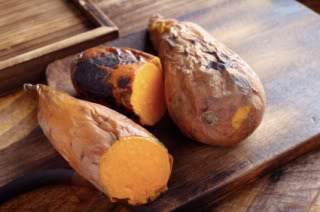 Sometimes, weight loss slows. Sometimes, what worked amazingly well before, stops working quite the same. Although this can be scary, frustrating, annoying, or all of the above when progress slows, stops, or requires new input to continue like it was is ultimately okay, because we are an adaptive species. We can change things up, shift stuff around. Physiological processes (among which weight loss and metabolism can certainly be counted) are never linear – that’s partly what makes all this stuff so endlessly engaging.
Sometimes, weight loss slows. Sometimes, what worked amazingly well before, stops working quite the same. Although this can be scary, frustrating, annoying, or all of the above when progress slows, stops, or requires new input to continue like it was is ultimately okay, because we are an adaptive species. We can change things up, shift stuff around. Physiological processes (among which weight loss and metabolism can certainly be counted) are never linear – that’s partly what makes all this stuff so endlessly engaging.
Today, I revisit a strategy for overcoming these lulls in weight loss induced by low carb: carb (re)feeds. They seem counterintuitive, sort of, especially if you’ve had success restricting carbs, but hold you opinions until you read on. I think you’ll find it enlightening.
Dear Mark: Your blog is a treasure trove of valuable information. Thank you for keeping this resource available to us!
This is a question that I think many of your readers would appreciate seeing addressed in a post. [Background: I've been studying (and trying, periodically) various low carb regimens for many years, with varying degrees of success. I'm looking to metabolize off about 30-40 pounds of excess fat, build lean muscle and optimize my health and fitness.]
My question is, what do you think of the increasingly common recommendation (from various diet and fitness gurus) to “spike” calories and carbs one day per week, in order to keep the body from down-regulating certain mechanisms too much due to continued low carbohydrate intake? The theory is that a once-per-week carb/calorie spike gives the metabolism a boost, and keeps weight loss going at a better rate than simply sticking to the low carb regimen seven days per week.
I’m wondering if this recommendation for one “free day” per week is helpful or harmful to the objective of significantly reducing excess body fat over a period of a few months, and staying lean for life. I don’t mean a “be a fool and eat garbage” day, but an honest “spike the carbs and calories with healthy foods” day. What do you think: Would this be a weight loss booster overall, or just a setback on the road to burning excess fat and getting to an optimally lean body composition?
Thanks, Mark! I (and I’m sure your other readers) will value your opinion on this.
Dee
I’m happy to help. Thanks for the kind words.
Short answer: Yes, I think there is something to the lowish-carber’s occasional carb and calorie fest. Its relevance to a given individual depends on that person’s metabolic situation, of course, but I wouldn’t dismiss it out of hand. Check out my previous posts on leptin and carb refeeds and weight loss to get an idea.
Longer answer: If you’re eating low-carb and low-calorie (which low-carb tends to promote on account of its inherent satiety) and the weight has stopped dropping, you may be low in leptin. Why does leptin matter, and what do calories and carbs have to do with it?
Leptin is a hormone that fulfills two primary roles, as far as metabolism and weight loss go – it increases (or lowers) energy expenditure, depending on perceived energy availability, and it inhibits appetite. Both actions actually happen in the brain, but it’s leptin that gives the brain the message. If perceived energy availability is “low,” energy expenditure drops and appetite increases. If perceived energy availability is “high,” energy expenditure increases and appetite drops. That’s a quick and dirty (and incomplete) overview, but it serves our purposes for today’s discussion.
How does the body “perceive” energy availability?
Body fat is, quite literally, stored energy. It’s also an endocrine organ that secretes leptin, the amount of which in circulation is directly proportional to the amount of adipose tissue on your body. So, the leaner you get, the less body fat (and less stored energy) you have available to drive leptin secretion. Even if you’re not as lean as you’d prefer to be, your lower body fat levels are low enough that the brain isn’t getting the “high energy availability” message from leptin.
Insulin is another indicator of energy availability. Sure enough, insulin increases leptin secretion in fat cells. As far as the body’s concerned, if insulin is present in significant amounts, food has just been eaten, which means food is probably available in the environment. If food is readily available, the body doesn’t need to cram as much food in, nor does it have to conserve energy. It can do things that aren’t essential to immediate survival, like play a game, have sex, go explore, or work out, because there’s plenty of energy available. Leptin goes up, reducing appetite and increasing expenditure. Problems arise with leptin resistance, of course, when your insulin is constantly elevated, but I’ll get to that later.
Carbohydrate content of the diet, perhaps independently of the increase in insulin, also affects leptin levels. Protein also increases leptin, and fat seems not to, but carbohydrates have the largest effect.
Overall calorie content of the diet is an indicator of energy availability. Studies show that calorie restriction causes the body to lower serum leptin levels in order to protect against further weight loss, and that supplementary leptin kickstarts weight loss all over again.
Ultimately, then, leptin is how the body senses both incoming and stored energy. It goes up in response to food eaten, as well as food stored. And since day-to-day survival of an organism is largely about energy availability, the presence or absence of leptin can make life pretty awesome or pretty awful. This doesn’t just impact weight loss or gain; it impacts your enjoyment of life. Low leptin? You might not feel like taking that walk with your friend. You probably won’t want to work out. Your libido might suffer. You might not feel like doing much of anything except sit around.
Can you see why lagging leptin might be an issue in stalled weight loss during a diet? You’re dropping calories (an indicator of reduced energy availability), dropping body fat (an indicator of reduced energy availability), and, especially if you’re low-carb, you’re dropping insulin and carbs (an indicator of reduced energy availability). All these things tell the body to make less leptin, and less leptin means higher appetite (so you eat more) and lower energy expenditure (so you burn less fat and don’t feel like doing much of anything).
How Should You Do It?
As I mentioned in the refeed post, keep the fat content of your meals down when doing a carb feed – about 50 grams for the day. Why? For one, fat doesn’t have as much an effect on leptin as carbs or protein do, and two, since triglycerides have been shown to prevent leptin from crossing the blood-brain barrier (into the brain where leptin does its work), the increased postprandial triglycerides (which are a normal, temporary, physiological consequence of eating fat and different from elevated fasting triglycerides) may reduce the effectiveness of leptin.
The greater you normally restrict carbs, the more you eat on your refeed. If you’re hanging out in the 100-150 gram range, you probably won’t need much – if any – of a boost in carbs. If you’re below 100 grams, I’d do 250 grams or so. If very low carb (below 50 grams), shoot for 300-350.
Do your refeed on a training day. Lift/sprint/run/hike/play big and, then, eat big. Your insulin sensitivity and leptin sensitivity will be high, your glycogen will be depleted, and you will basically be set up to store/burn the carbs and muscle energy rather than store it as fat. Leptin will increase regardless if you train or not, but doing it on a training day will mitigate any metabolic fallout.
Don’t use this as an excuse for stuffing your face with garbage. I mean, I suppose you could truly turn it into a cheat day and eat a couple pizzas, a gallon of ice cream, and a platter of crispy oxidized soybean oil-infused whatevers, but you’ll have better results with potatoes and yams (or even rice) and animals.
Who Shouldn’t Do It?
A big carb feeding isn’t right for everyone. I would say that for the severely overweight-to-obese, you should not be messing around with carb feeds. It’s not that they’ll wreak irreparable amounts of damage on your metabolism or anything; they just won’t be very helpful. See, the obese tend to be insulin-resistant (PDF). They have tons of leptin in circulation, far more than lean individuals, but it cannot do its intended job. Instead of telling the muscles to burn more fat for energy and telling the brain to quell the appetite, leptin’s message in the obese is muffled, stifled, hamstrung. It can’t get through. Lack of leptin is not the problem, as the considerable amounts of adipose tissue are doing a fine enough job manufacturing the stuff. Sensitivity to leptin in the brain and periphery is the problem. Thus, adding more leptin to the bunch via dietary manipulation won’t help, and it may even compound the problem. Improving leptin sensitivity is the real issue here, and a lowish-carb Primal eating and general lifestyle plan (with adequate sleep, smart training, and plenty of stress mitigation) is the best way to do that.
Who Should Do It?
Leptin is most effective in the lean, moderately lean, and somewhat chubby (yes, those are absolutely technical terms). Men with six-packs, four-packs, two-packs, and men and women with a light layer of subcutaneous blubber covering everything up tend (a la those hunter-gatherers who aren’t exactly “ripped,” but definitely not unhealthy) to be essentially leptin-sensitive. In these individuals, leptin acutely boosts skeletal muscle fatty acid oxidation.
Those with “stubborn” body fat, those on an extended stall, or the otherwise lean who can’t quite seem to get the last dozen pounds to disappear are prime candidates for a big refeed. They’re not so overweight that leptin resistance is likely, so they’ll benefit from a general increase in leptin. They’re fairly lean, so circulating leptin is lower.
Anyone who’s “feeling off” from low-carb Primal, despite their best efforts. Say you’ve given the low-carb flu a chance to pass over, you’ve addressed your sleep and stress, you’re not trying to train like a pro athlete, and you’re still feeling run down and unable to lose weight? Throw in a big carb feed.
What about you guys? Have you experimented with carb refeeding, and if so, how did it impact your weight loss efforts?
Thanks for reading!
Grab The Primal Blueprint Cookbook Today and Receive Free S&H and a Free Primal Blueprint Poster

July 29, 2012
Weekend Link Love
For this 200th(!) edition of Weekend Link Love I thought I’d try a slightly new format. Instead of a hodgepodge collection of links to start the blog post I’m going to break the links out into sections. Don’t worry. I’ll still be linking to and providing commentary on anything and everything I find interesting, but now you’ll know that THE latest, most important and intriguing research that was released in the last week, and THE blog posts everyone is talking about can be found here. It’s your one stop shop for catching up on what’s going on in the world of ancestral health and fitness published every Sunday. Let me know in the comment board if you prefer this little format change. Thanks, everyone!
Research of the Week
Persistence-hunting, water-carrying, tree-climbing hunter-gatherers don’t actually expend more energy than lazy soda-guzzling Westerners, a new study has found, dispelling the popular notion that losing weight is all about burning calories. (Perhaps it’s the soda?)
Dying potato chips red caused test subjects to eat 50% fewer of them.
Average daily hours of television viewed, separated by country. I could excuse the US’ poor showing if it reflected Louie, Breaking Bad, and Game of Thrones marathoning, but I doubt that’s the case.
Interesting Blog Posts
One paleo blogger’s successful battle against high cholesterol (and she managed to avoid statins!).
Human ancestors were nearly all vegetarian, a Scientific American blogger says. What do you say? A $50 gift certificate to PrimalBlueprint.com to the commenter with the best response! (As judged by me and the Worker Bees. This contest ends midnight PDT, July 31.)
Media, Shmedia
Bryan (future Primal doctor) and Tracy (former math teacher, newly-minted MovNat trainer) Barksdale were recently featured in The Daily News out of Galveston, Texas, where they’ve been spreading the ancestral love.
This article on “the caveman diet” in The Vancouver Sun is less impressive, but fairly even-handed. I only counted a couple references to eating grubs, bugs, and rodents. And they didn’t even mention loincloths once.
Everything Else
I’ve talked about wheat germ agglutinin before, but this article really lays into the pernicious wheat lectin. Also: “Pandora’s bread box” is coined, which I think is just fantastic.
Thank heavens the Canadian authorities are finally cracking down on illegal frontyard gardens. Think of the children!
Recipe Corner
Richard Nikoley’s Fat Bread – it’s not quite like the real thing, but it’s not trying to be.
Get some beef, some okra, a crock pot? Baby, you got yourself an okra beef stew!
Time Capsule
One year ago (July 29 – August 4)
Are Traditionally Prepared Grains Healthy? – Find out whether all that fermentation, soaking, and sprouting is even worth the effort.
Smart Spice: Cumin – Everything you need to know about this pungent spice.
Comment of the Week
I love that research medicine is validating and reinforcing my love for Calvinball.
- Amen, T.D. Next, I hope they confirm the existence of sentient stuffed tigers.
Grab The Primal Blueprint Cookbook Today and Receive Free S&H and a Free Primal Blueprint Poster

July 28, 2012
Salmon Mousse Gelatin Ring and Raspberry Coconut Gelatin Dessert
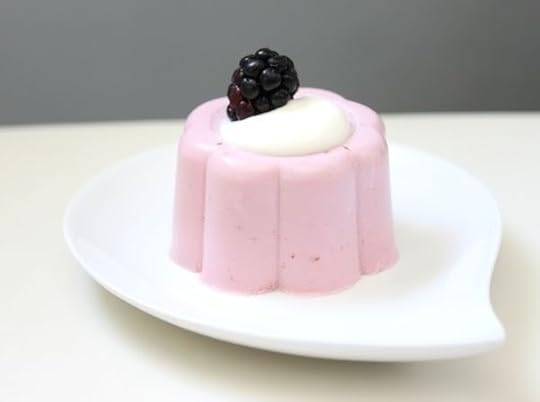 Jiggling rings and towers of gelatin can bring back unappetizing memories of a culinary era when Jell-O was king. So it’s understandable if you read the title of this post and said, “Seriously?”
Jiggling rings and towers of gelatin can bring back unappetizing memories of a culinary era when Jell-O was king. So it’s understandable if you read the title of this post and said, “Seriously?”
Yes, seriously. Forget about flavored gelatin rings made with mini-marshmallows and canned pineapple or with Miracle Whip, peas and diced ham. Instead, envision a rich and creamy dessert with the flavor of fresh, ripe berries and the gentle sweetness of coconut milk. Think about an appetizer that tastes just like salmon mousse, except you can serve it in slices without any need for crackers or bread. And this is just the beginning. With some unflavored, powdered gelatin and a little creativity there is no limit to what you can come up with.
Although the ideal way to add gelatin to your diet is through bone broth and gelatin-rich cuts of meat, it’s easy to add even more by using powdered gelatin. Plus, it’s fun too. If you have kids, make sure to bring them into the kitchen to watch powdered gelatin work its magic.
Because powdered gelatin is mostly odorless and flavorless (those drinking it straight out of a glass might disagree) it can be combined with an endless array of ingredients to make both sweet and savory dishes. Once you have the basic process of cooking with gelatin down, you can experiment with different liquids, proteins, vegetables and fruits.
The two recipes below will walk you through the process of cooking with gelatin step-by-step, but as a general guideline first mix 1-2 tablespoons of gelatin powder into 1/2 cup of cold liquid.
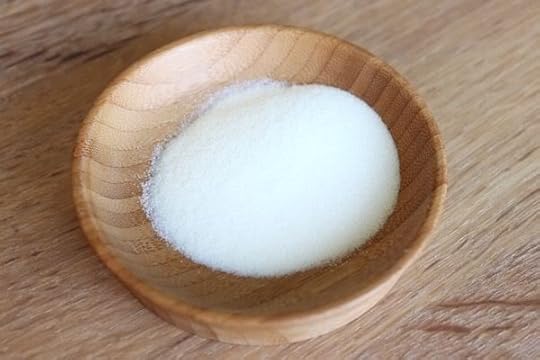
Once the powder disappears and a loose gelatin forms (within a minute) then add 1/2 cup of hot liquid to dissolve the gelatin.
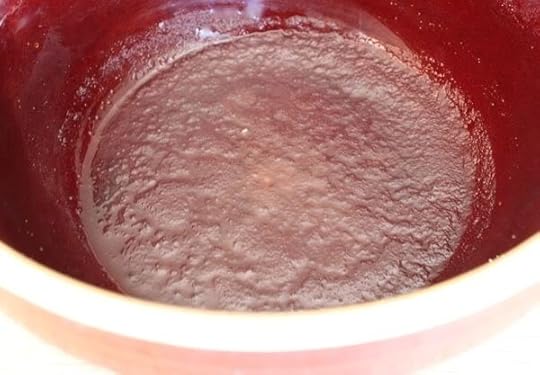
The liquids you use can be anything from water to coconut milk to broth, lemon juice, coffee, tea, etc..
Then, add another cup of any liquid to the dissolved gelatin or add a semi-liquid like sour cream, yogurt or mayo. Lastly, add 1-3 cups of flavorings: seafood, meat or vegetables for savory appetizers and sliced or pureed fruit to desserts. Pour the mixture into a ring mold or other container and chill until firm and you’ll have yourself a gelatin-rich treat.
As you can see, the variations are endless. After one try you’ll realize how easy it is to whip up gelatin desserts and appetizers that are fun to make and eat, genuinely delicious and completely Primal.
Salmon Mousse Gelatin Ring
Ingredients:
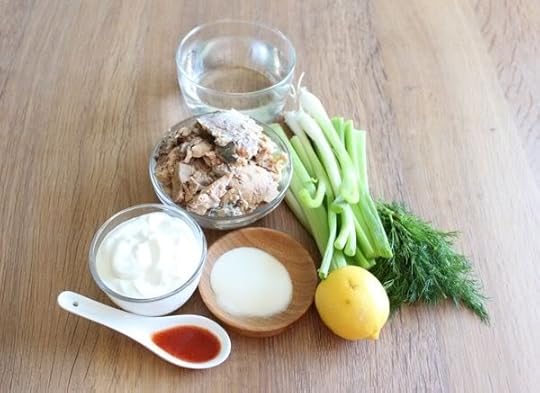
2 tablespoons unsweetened powdered gelatin
1/2 cup cold water (or broth)
1/2 cup hot water (or broth)
1/2 – 1 cup sour cream
1 cup finely chopped celery
2 green onions, finely chopped
2 tablespoons finely chopped fresh dill
2 cups canned salmon, drained
2 tablespoons lemon juice
1 teaspoon hot sauce
Salt to taste
Instructions:
**Note: For a consistency that is smoother and closer to salmon mousse, blend the celery, green onions, dill and salmon in a food processor until very finely chopped and smooth. For a chunkier consistency, just chop the celery, onion and dill by hand and break apart the salmon with a fork.
Pour the cold water into a medium bowl and sprinkle gelatin over the surface. After a minute, when the gelatin is wet and gummy, pour in the hot water and whisk to dissolve the gelatin.
Whisk in the sour cream until smooth then stir in the remaining ingredients. Make sure to add salt to taste.
To shorten the amount of time the gelatin will take to become firm in the refrigerator, place the bowl inside a larger bowl filled with ice and water. Stir occasionally, letting the salmon mixture thicken for 20 minutes or so.
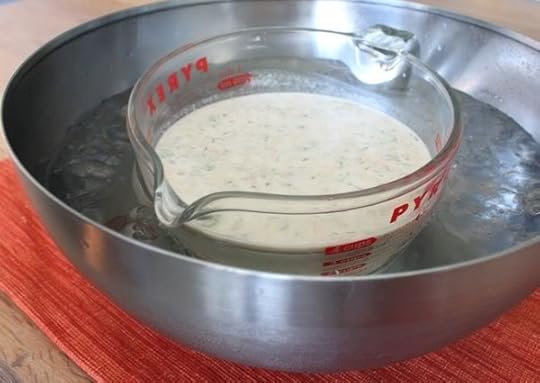
Pour into a lightly oiled 6-cup ring mold, several smaller molds, or a loaf pan lined with plastic wrap.

Cover and let chill in the refrigerator until firm, at least 4 hours. Gently shake it out of the loaf pan or ring mold before serving. Serve alone or with salad greens.

Raspberry Coconut Gelatin Dessert
Ingredients:

1 tablespoon unsweetened, powdered gelatin
1/2 cup cold water
1 can of coconut milk (13.5 ounces)
1 cup raspberries
1 teaspoon vanilla extract
Instructions:
Soften the powdered gelatin by pouring it into the cold water.
Heat 1/2 cup of coconut milk.
Add the hot coconut milk to the gelatin and stir until the gelatin dissolves.

In a blender, blend the remaining coconut milk with the raspberries and vanilla. Pour into the bowl with the gelatin. Stir.
Chill in an ice bath first to speed up the thickening process (like in the salmon recipe) or just pour into small dishes or ring molds. Refrigerate until firm.

Grab The Primal Blueprint Cookbook Today and Receive Free S&H and a Free Primal Blueprint Poster

July 27, 2012
The “Aha” Moment: When Clarity Happens and Real Change Begins
It’s Friday, everyone! And that means another Primal Blueprint Real Life Story from a Mark’s Daily Apple reader. If you have your own success story and would like to share it with me and the Mark’s Daily Apple community please contact me here. I’ll continue to publish these each Friday as long as they keep coming in. Thank you for reading!
 My wife Amy and I have been married for 14 years, we have 2 wonderful boys, I have a great job, and a nice home in a quaint city, and over the years we have been slowly falling apart.
My wife Amy and I have been married for 14 years, we have 2 wonderful boys, I have a great job, and a nice home in a quaint city, and over the years we have been slowly falling apart.
I’m the kind of guy that carries his weight well, that’s what I’ve been told. I was active all my young life, track, football, martial arts, I could eat anything and burn it off and I always preached the best way to stay fit was exercise; the rest will take care of itself.
Amy was an average weight tomboy kid, an overweight teen and then leaned out again her senior year of high school. She played ice hockey and roller hockey in a men’s league and started to rebuild overweight self-esteem issues. Her weight loss was short lived though once she moved away from home. As a young adult in a new town alone, she returned to boredom eating. Stopping at the grocery on Friday nights after work and picking up a frozen pizza, doughnuts, and ice cream to get through a lonely weekend.

When we met in 1997. I was skinny, I was stressed and unhappy and she changed all that. Being young at heart and mind, our 16 year age difference didn’t concern me. We set up house and that’s when life started to get good. I’m a chef by profession and I’ve been told I show my love through food, by the time our first son arrived; we looked like a whole lotta love. All through her pregnancy I cooked every comfort food in my repertoire, she extreme couponed stacks of Hamburger Helper and junk foods, and I would do my magic with fresh veggies and tomato sauces, pasta 5 times a week was not unheard of and bread was usually on the menu in some form every day. My “sympathy pregnancy weight” ballooned to 225 lbs and Amy hit 250+, but we were happy, remember? We avoided mirrors and settled in with comfy pants with New Year’s resolutions in the back of our minds, until we had a picture snapped of us with our new born son at a Christmas party. It was not us, it was two people in fat suits. Our son was diagnosed with autism at 15 months old which was just another stressor added as we tried to figure out how to cope.

We spent the next 10 ten years yo-yo’ing up and down the scale. When we would try diets, I was insistent that too much sugar was our issue and Amy felt that it was too many carbs – neither us of agreeing with the other at the same time. So we would start off on our separate diets at the same time and inevitably end up sabotaging each other within a week or two – over and over. A second pregnancy and another son diagnosed on the autistic spectrum plus moving our household 5 times for various reasons over the years all factored in as well. I finally moved out of the kitchen and into a management “suit and tie position” where I suddenly found myself in front of a computer and now even the exercise of running around a kitchen had stopped and my weight tipped the 200 mark… again.
The insurance plan I was enrolled in required a physical and I secretly looked forward to it because I had started to feel something was wrong, I felt like I was closer to 70 years old rather than 50. I had problems getting out of bed, hangovers were worse, and I really felt like death warmed over most of the time. My fears were confirmed and my doctor read me the riot act about making changes in my life, so Amy and I made a plan, yeah the New Year’s resolution diet…two weeks later…5 lbs gained..back to drawing board.

February 2011 we came across your site touting a new way of thinking about how our body works and the word “diet”, and it struck a beautiful chord with us. Up until now I had always thought weight loss was all about exercise, and our new way of thinking became about what we put into our body, and sugar AND bad carbs was at the crux of it all. We tossed everything in the house that said sugar, corn syrup, or had any grain in it, and if wasn’t fresh it hit the trash.
Co-workers were less than supportive at first, lots of funny looks, scratching heads, rolling eyes, the laughter and “yeah right, caveman” comments flew everywhere. They offered up cake and candy like body snatcher pods to tempt me back into the fold on a daily basis. The headaches were non-stop; I carried 3 types of aspirin to experiment with for the dull thump of sugar withdrawal.
Life at home was much different and that made all the difference. With all the crap out of the pantry (except the kids SAD food) we had the beginnings of a culinary playground and Amy had recipes and fresh foods waiting for me when I walked in the door. All at once another positive, my creative side renewed itself, it was almost like a market basket competition from culinary school every day, and I had to find new and creative ways to make good food without sugar, bread or opening a box. We purchased several books with great recipes and experimented with eliminating or substituting SAD ingredients with Primal whole foods; it was easy and tasted great. We also started photographing and posting pictures online and the kudos from the paleo community were always welcome.
The weeks ticked by quickly and the first 30 days ended, and instead of feeling like Lent was over it felt more like jumping off the high dive, the headaches were long gone, food tasted better, my mood had improved, and I was pissing off the candy crowd. The fat suit was still wrapped around me but I felt lighter, quicker, and faster. I wasn’t having the 2:00 PM snooze desires anymore. I was actually thinking about how I could be spending my empty minutes…exercising? We added sack time and with only a few exceptions religiously cut off electronics and TV at curfew for a nine hour sleep date every night.
I think it was right about the 6-month mark was the beginning of my “aha” moment. We were eating fresh/ organic foods, grass-fed meats when we could, I was exercising at least 3 times a week, our SCOBY was getting thick and the kombucha recipe was perfect. The pictures of us were showing different people, but we were changing, too. A renewed interest in how we cared for each other and our kids was beginning to find its way into our home, and problems at work didn’t piss me off, I just solved them. I smiled more, a helluva lot more. Everything we had read was coming true and weight/diet wasn’t important anymore. We still wanted to look good naked, but everything else we were doing became the focus and weight became the by-product. We had been sitting on our asses getting heavier and letting life slip away from us, no longer wanting to fight back, and that was taking its toll on every aspect of our lives.
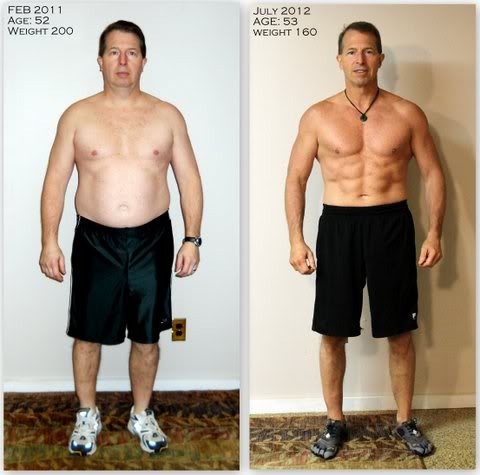
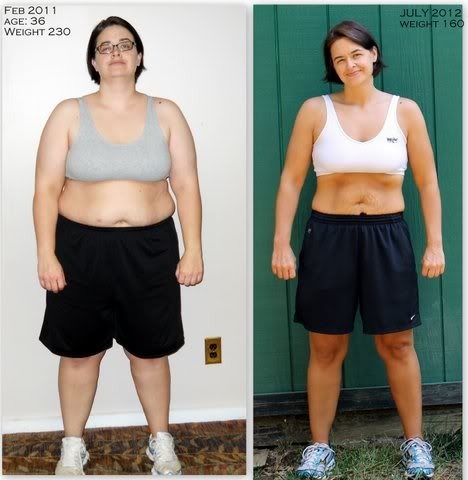



I can say for a fact that this past year and a half has been one of the most exciting years of my life, doors have been opened in more ways than I can say here, and I only see it getting better for the rest of our lives. I wanted to be fit and happy at 50, instead I was sick and depressed. At 53 now, I consider myself to be healthier than most 25 year olds I know and I’m still getting stronger every day. Amy looks radiant, I can’t keep my eyes off her and she grows younger and more beautiful every time I look at her. As a couple we have turned our lives around completely, and we live fearlessly now knowing we can face any challenges thrown our way (look out Mudders and CrossFitters). I can’t think of any more perfect way to spend the rest of our lives together, eating well, playing and exercising, and loving each other and our kids.
Thanks Mark for all your help and wise words, and thanks to this wonderful community we’ve become part of, I know we’ll spend our lives “Paleoing it forward” until everyone gets it like we did.
Ed Smith
Grab The Primal Blueprint Cookbook Today and Receive Free S&H and a Free Primal Blueprint Poster

Mark Sisson's Blog
- Mark Sisson's profile
- 199 followers



